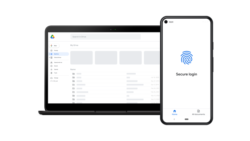Today’s consumer is looking for more personalized, meaningful brand interactions. How can you better connect to maximize your marketing ROI?
On March 24, I moderated a Search Engine Journal webinar presented by Dan Dillon, VP for Marketing at Reveal Mobile.
Dillon shared proven local marketing campaigns you can use right now to reach high-intent audiences.
Here’s a recap of his presentation.
While there was a massive adoption of online shopping in 2020 because of the COVID-19 pandemic, it still only accounted for 21% of all retail sales.
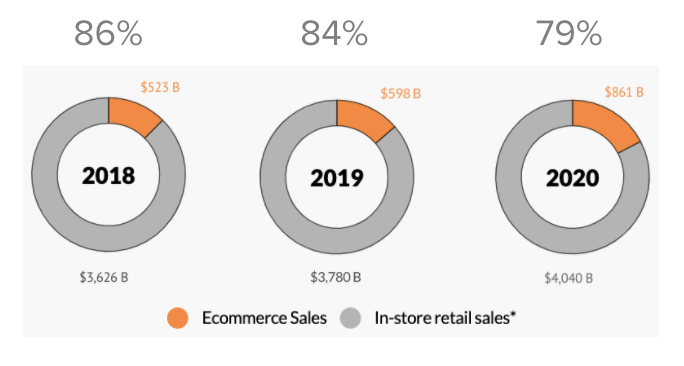
Even prior to the pandemic, the majority of retail sales have been happening in physical stores. The same trend will most likely continue in 2021.
On the other hand, advertisers are eager to get shoppers back into stores.
A recent eMarketer report shows that the number of retailers that plan to increase ad spend to drive in-store visits is nearly doubling over the next six months.
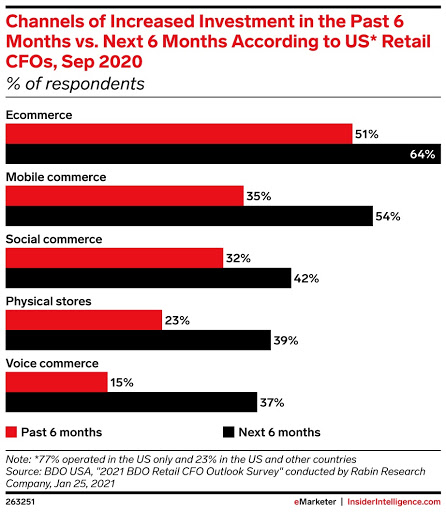
Delivering Personalization
One thing that did not change is consumers’ expectations of a personalized experience.
An Epsilon research revealed that 80% of consumers are more likely to make a purchase when brands offer personalized experiences.
But personalization shouldn’t be just a one-off thing. It needs to happen throughout a consumer’s interactions.
Retailers that personalize as many touchpoints as possible across marketing and shopping channels are more likely to achieve 300% ROI or more, according to The Rise of Personalized Commerce Study.
Retailers that only focus on shopping experience see low ROI.
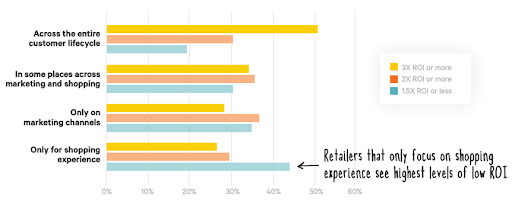
But what does personalization really mean?
For consumers, it means getting special offers only available to them and being identified as the same customer across all touchpoints, among others.
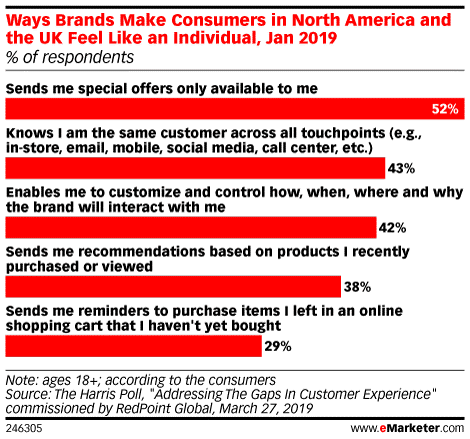
Brands can leverage certain types of content that are most compelling when it comes to personalization.
These include:
- Products related to interest.
- Similar product recommendations based on purchase or search.
- Update on availability or price.
- Retargeting of the exact product.
- Based on their location.
- And more.
The single most important thing you can do as a brand marketer is to advertise a product to a consumer who you know wants that product by having shown intent.
But the most essential thing to make personalization work is data.
Consumers are aware that personalization runs on their data and some are willing to give up data if they know they are going to have a better experience with the brand they’re interacting with.
In fact, 66% of mobile device users share personal data if it makes life more convenient and 69% of mobile device users share location data if it makes life more convenient.
And here’s what retailers and brands can get in return if they leverage personalization:
- Increased retail sales by 2-5%.
- Reduced marketing costs by 10-20%.
- Increased customer-satisfaction rate by 20%.
- Boost in conversion rates by 10-15%.
- Increased employee engagement by 20-30%.
Geofence to Maximize Local Marketing ROI
When marketing locally, retailers should focus on location data and capitalize on intent to offer personalized experiences.
Many advertisers running local campaigns are geofencing their own stores (i.e., drawing a virtual boundary around their own business locations) and remarketing to those visitors to keep coming back.
Geofencing can also be used:
- On competitors’ locations if you’re looking to capture their audience.
- On other locations where your ideal customer visits.
With geofencing, you can:
- Retain your customers.
- Win market share.
- Acquire new customers.
Getting Shoppers Back Into Local Stores
Location data lets you reach loyal customers you’ve been marketing to visit your store even during the pandemic.
It also allows you to:
- Market to high-intent audiences and eliminate wasted ad spend.
- Capture casual shoppers you don’t have in another system.
However, it’s really important to think about not just the locations but what kinds of audiences you’re marketing to.
MIT Sloan Management Review’s recent research reveals how consumer preferences have changed and how retailers can adapt.
They identified five major COVID-19-related shopper segments:
- Functional: Shoppers who are willing to return in-person to retail environments where they are already familiar with the layout and range of products offered.
- Tactile: Shoppers who have been bored at home and are eager to hit the stores once they perceive there’s a relatively low health risk during the pandemic.
- Experiential: These are shoppers who aren’t at the store just to check off items on a shopping list, but view a shopping trip as an event.
- Diversion: Shoppers are eager for the excuse to get out of the house and were among the most excited about stores reopening.
- Reluctant: Shoppers who are never excited about in-person shopping, even when there wasn’t a pandemic..
Each shopper segment has different values and needs and it’s important to think them through especially when crafting your ad messaging.
Retailers and brand owners can target each segment by using the SAVE (which stands for Solutions, Access, Value, and Education) framework.
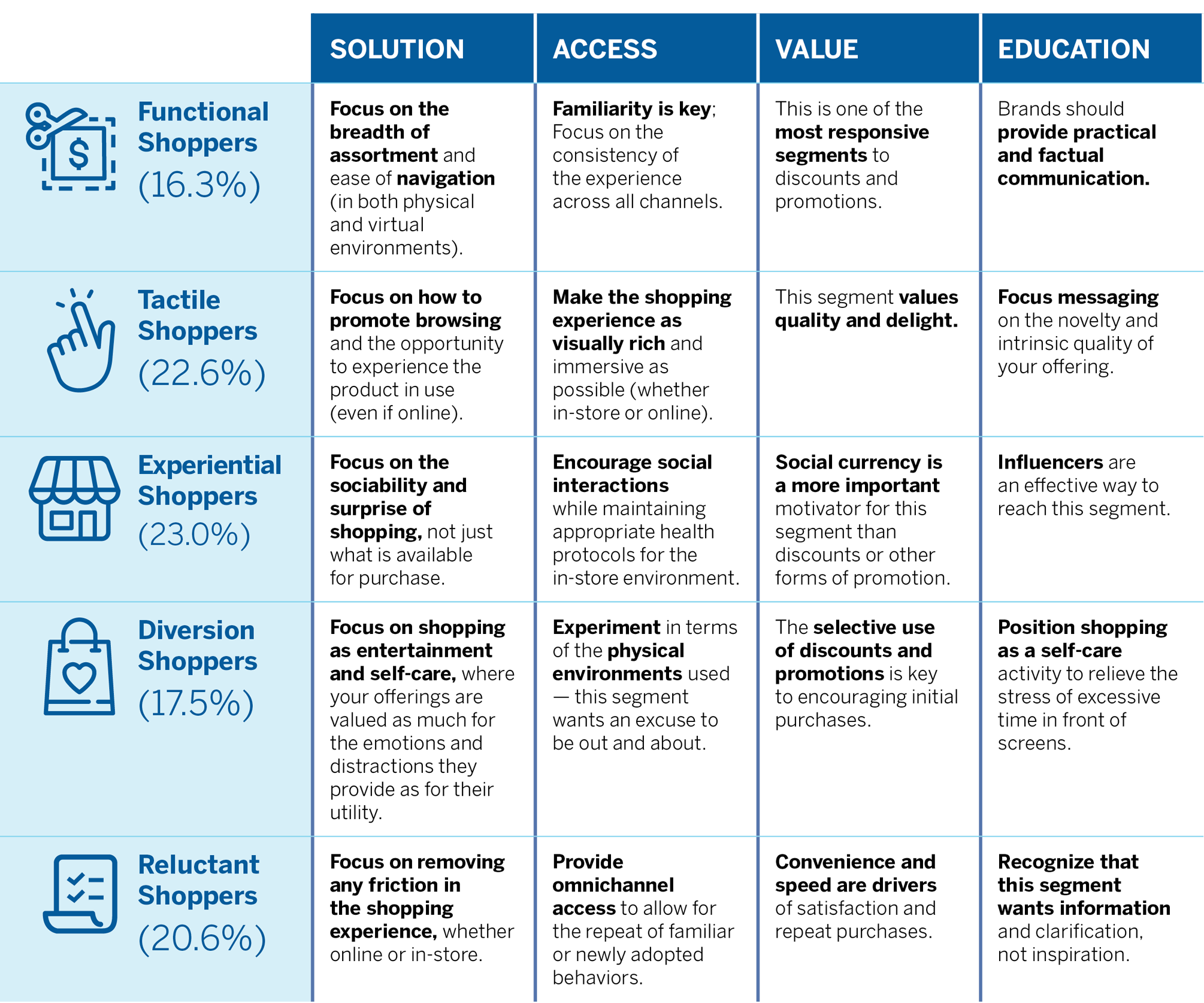
Personalized Messaging Driving Best ROI
There are a couple of touchpoints along the consumer experience where your shopper really resonates with your message:
- Use personalized messaging to remind customers to come back and finish their purchase (e.g., promotional, loyalty, win-back, abandoned cart).
- Personalized website and/or mobile app content.
- Personalized product recommendations.
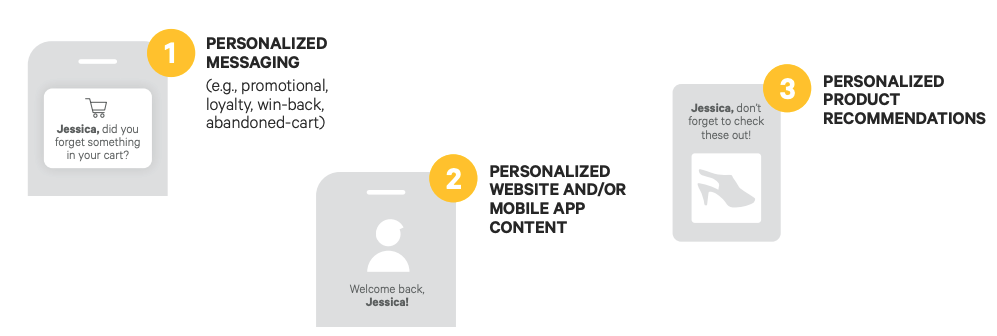
Geofencing Marketing on Facebook
Facebook Ads Manager is an all-in-one tool for creating ads, managing when and where they’ll run, and tracking how well your campaigns are performing.
It’s easiest to think about the Facebook Ads Manager in three parts: audiences, ad sets, and ads.
Let’s talk more about each of these parts.
Custom Audiences Are Your Best Friend
There are three kinds of audiences you can create in Facebook Ads Manager:
- Core audiences.
- Custom audiences.
- Lookalike audiences.
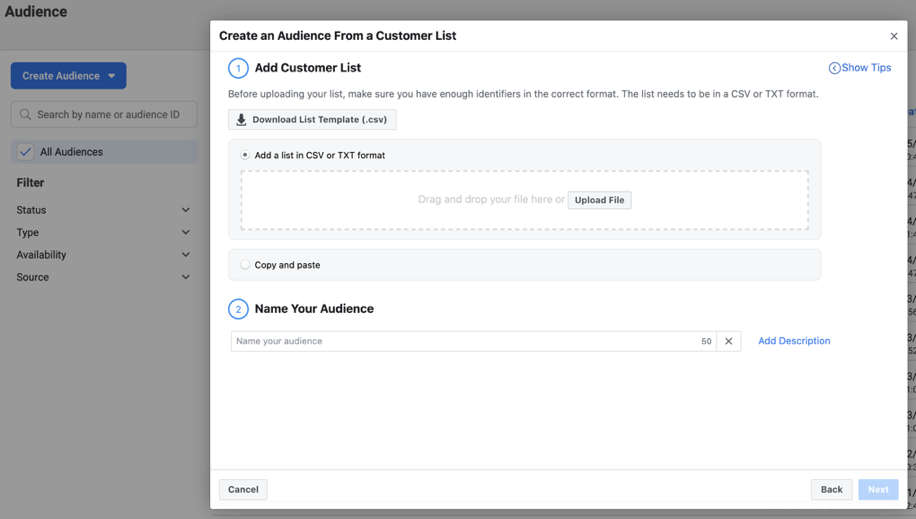
To create a core audience, you’ll need to choose criteria such as demographics, interests, and behaviors. Your ad will appear to people who match those criteria.
A custom audience is more targeted than a core audience because it’s created based on your data.
This audience lets you have the most control over who sees your ads on Facebook – and if you’re not using custom audiences, it’s time to start. They’re the fastest way to a better ROI.
To set this audience up, you can create custom audiences using several types of data your organization already has. The most useful are:
- Email address.
- Mobile ad ID.
- Phone number.
- Company.
- Job title.
After creating a custom audience, you can build a lookalike audience. Facebook uses the data you supply in your custom audience and finds similar people on the platform.
This is a great, cost effective way to extend your reach. This is a good tactic to deploy when you need bigger audiences for larger-scale campaigns. Conversion rates may go down, but awareness will go up.
Ad Sets: Who, When & How Much

An ad set can be made up of one or more of your ads.
At this level, you’ll determine how your ad will run, including budget, schedule, and audience.
Ads: Where the Rubber Meets the Road
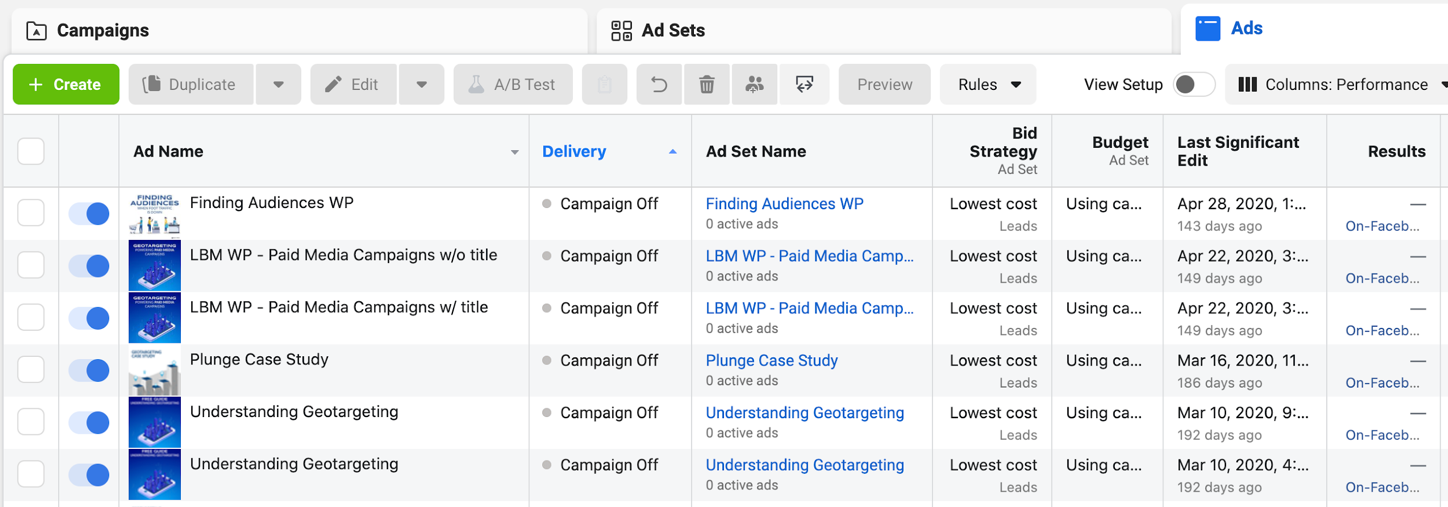
Your ads are what your audience will see – images, videos, text, and calls to action.
You can have multiple ads within an ad set. We recommend that you run A/B tests to see which ad performs better based on your specific KPIs.
Measure What Really Matters
Tying ads to online conversions and online purchases is pretty straightforward.
But what do you do if you’re running campaigns designed to drive foot traffic and purchases at brick-and-mortar retailers?
This is where privacy-compliant location data comes in. Location data drives the most reliable insights for foot traffic attribution, tying online ad spend to offline (in-store) visits.
With location data, you create custom audiences made up of people who visit specific locations and serve ads to those people.
These audiences can be made up of current customers, competitor’s customers, and visitors to locations you otherwise care about.
In your location-based marketing software where you built your audiences, you can see what portion of your target audiences showed up in the locations you are advertising and easily determine attribution.
Depending on the tool you’re using, location-based marketing software can also show you more detailed reports, such as foot traffic by day and comparisons to your competitors’ in-store traffic.
This enables you to see how your campaign is performing in near real time and make adjustments while in flight.
No need to wait until the campaign wraps up and then try again with a whole new campaign cycle.
Case Study
Moe’s is a fast-casual restaurant franchise chain that ran an advertising campaign with the following goals:
- Drive downloads of Moe’s app and coupon redemption.
- Increase foot traffic to restaurants.
- Win over customers going to competitive locations.
To do this, they advertised across social media and used custom audiences on Facebook.
They found their ideal audience by geofencing:
- Visitors to Moe’s.
- Visitors to direct competitors such as Qdoba and Chipotle.
- Visitors to indirect competitors (i.e., Mexican Restaurants in Raleigh, NC area).
They were able to capture nearly 20,000 diners after a week.
They took that list of mobile ad IDs and then pushed them into Facebook which matched 85% of this VISIT Local custom audience (17,000).
The results?
They saw a 67% increase in app download conversions.
By targeting this audience, they were able to improve their customer loyalty and retain diners they were under threat of losing from their competitor.
Q&A
Q: What tools/services do you recommend for geofence marketing?
Dan Dillon: VISIT Local from Reveal Mobile. It enables marketers to create custom audiences based on locations consumers visit.
It also enables marketers to look back up to 18 months, so you can advertise to audiences who visited specific locations before the pandemic. Best of all, attribution for all of your campaigns is included with clear, actionable reports built right in.
[Slides] Proven Local Marketing Strategies to Drive Customer Experience & ROI
Check out the SlideShare below.
Image Credits
Screenshots taken by author, March 2021

